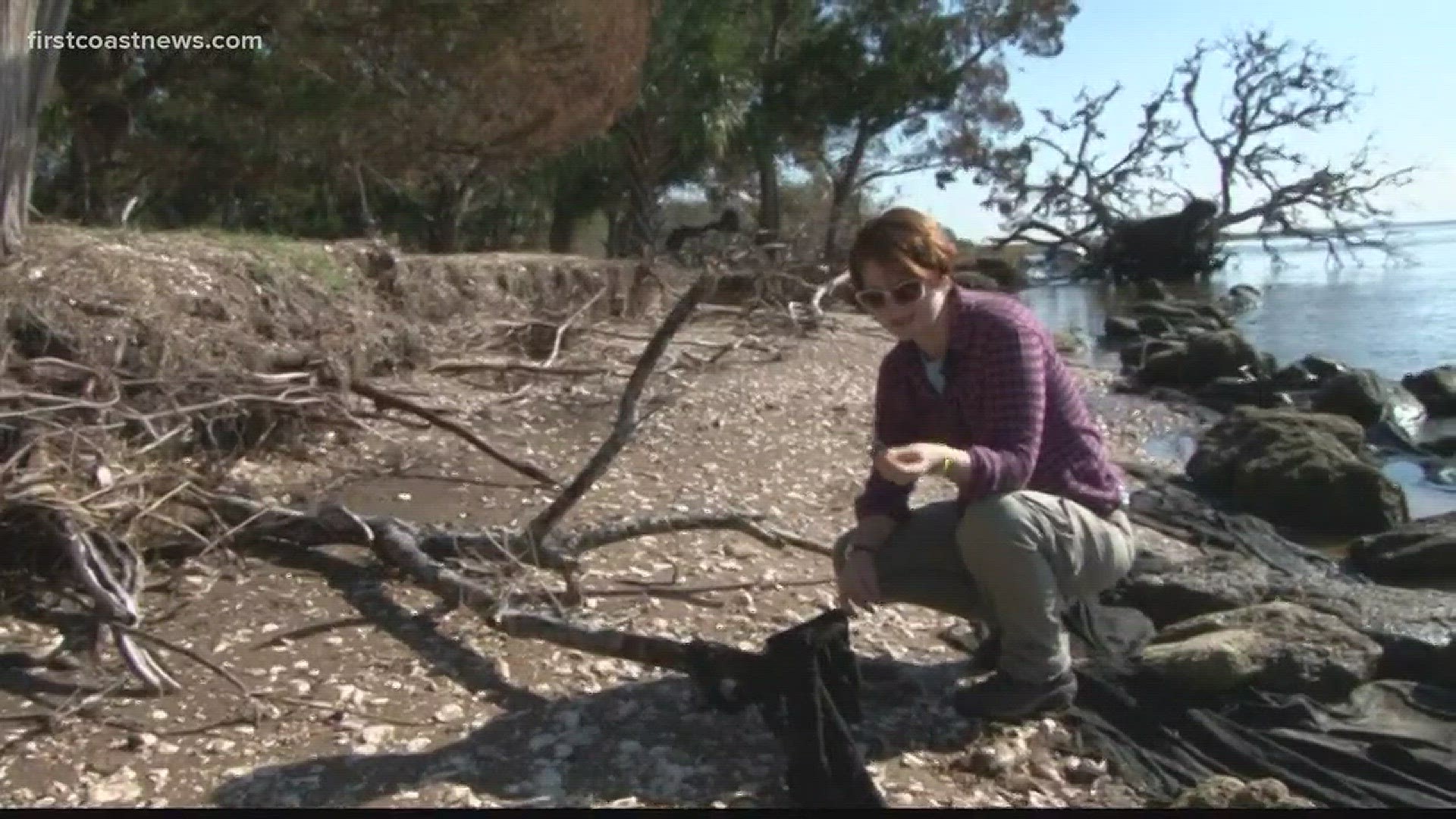ST. JOHNS COUNTY, Fla. -- In this month's edition of National Geographic, St. Augustine is mentioned as one of the places where archaeological sites are at risk of rising sea levels.
Deep inside the Guana Research Reserve, just north of St. Augustine, is the Shell Bluff Landing archaeological site. It's one site feeling the impacts of rising waters, according to archaeologists.
Local and state archaeologists are monitoring erosion there.
"This site is a time capsule of 6,000 years of people living here in northeast Florida," Archaeologist Emily Jane Murray said. She explained that Native Americans and eventually colonists lived on this land.
"We've seen what's happened after both (hurricanes) Matthew and Irma," Murray noted. "So as a result, we decided to do better documentation of the resource before it washes away further."
Right after arriving at the site, the archaeologists saw the land -- that used to be part of the archaeological site --had washed away. Roots were exposed, layers of history gone, and artifacts were visible.
Murray quickly found a 200-year-old olive jar fragment, a piece of St. Johns pottery made by Native Americans, and a shell tool the Natives used.
"So we'll photograph it so we have a record of it," she explained.
The team also measured the distance from a metal marker placed in the earth 30 years ago to the to the edge of the bluff now.
The distance was 15 meters of erosion since 1988. "So 30 years, 50 centimeters a year," Murray explained.
An old well, probably from the 1800's was also on the site. Two years ago, only the top few inches could be seen. Now, a good 4 feet of the well's walls have been exposed because of erosion.
Murray said increased storm activity and more extreme high tides factor into climate change.
"It's coming up slowly," she noted. "As it comes up, the tides pull more and more away so the erosion is a direct result of the sea level rise."
"There's up to 4,000 archaeological sites in Florida that will be affected by a 6-foot sea level rise," she said.
And that's expected by the end of this century.
"It's heartbreaking," Murray nodded, "but I take some solace in knowing if we weren't monitoring the site, we would lose all of it. "

